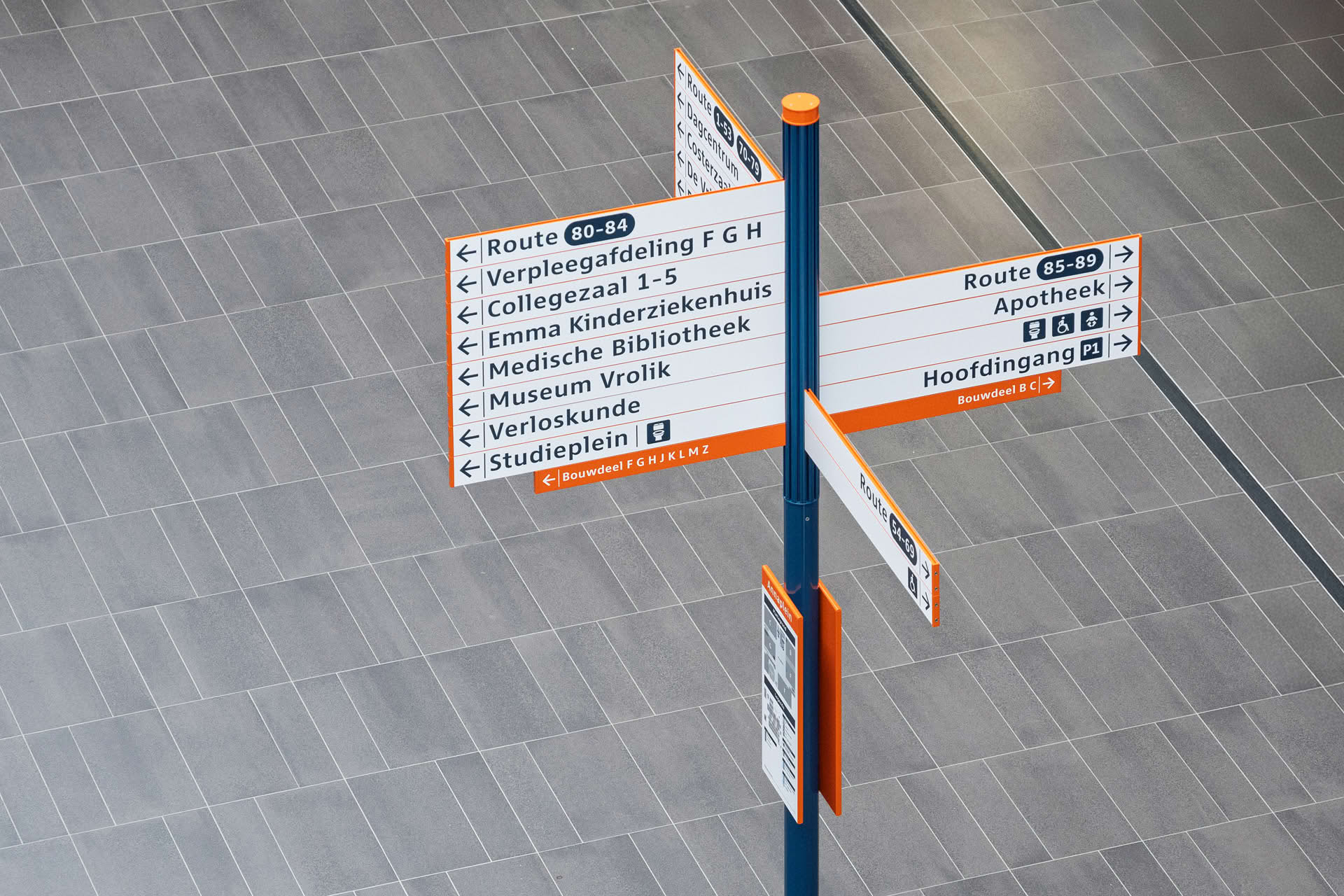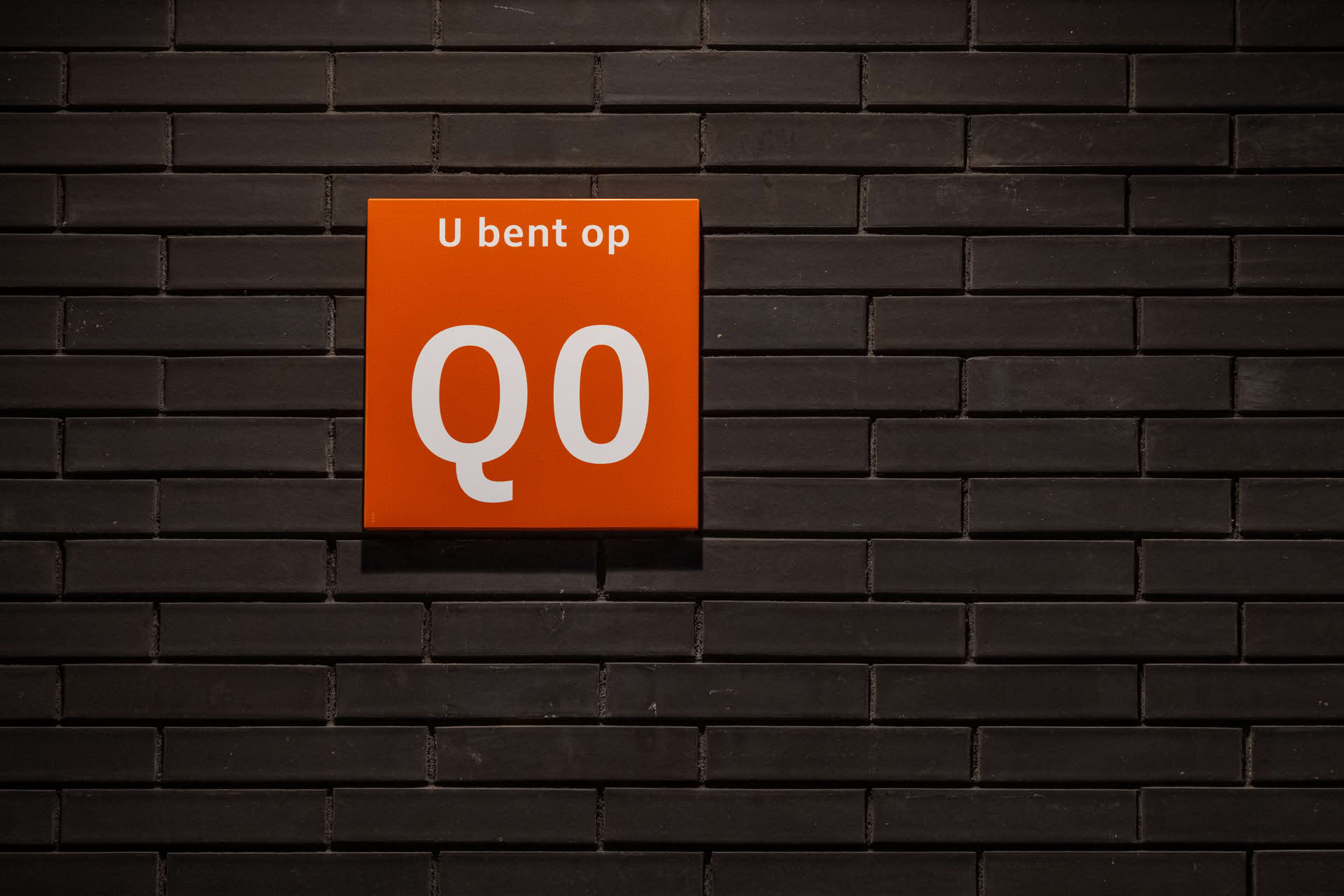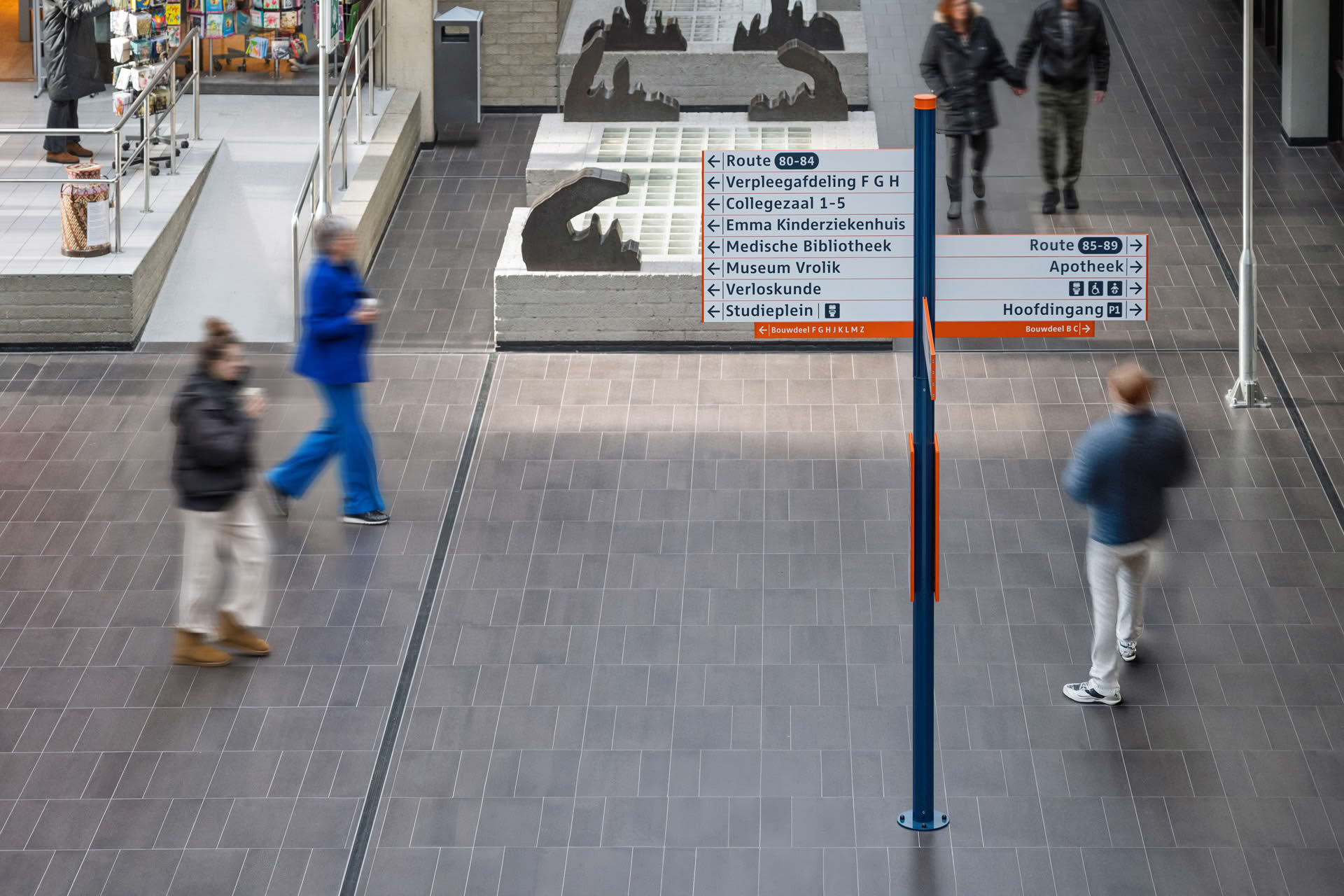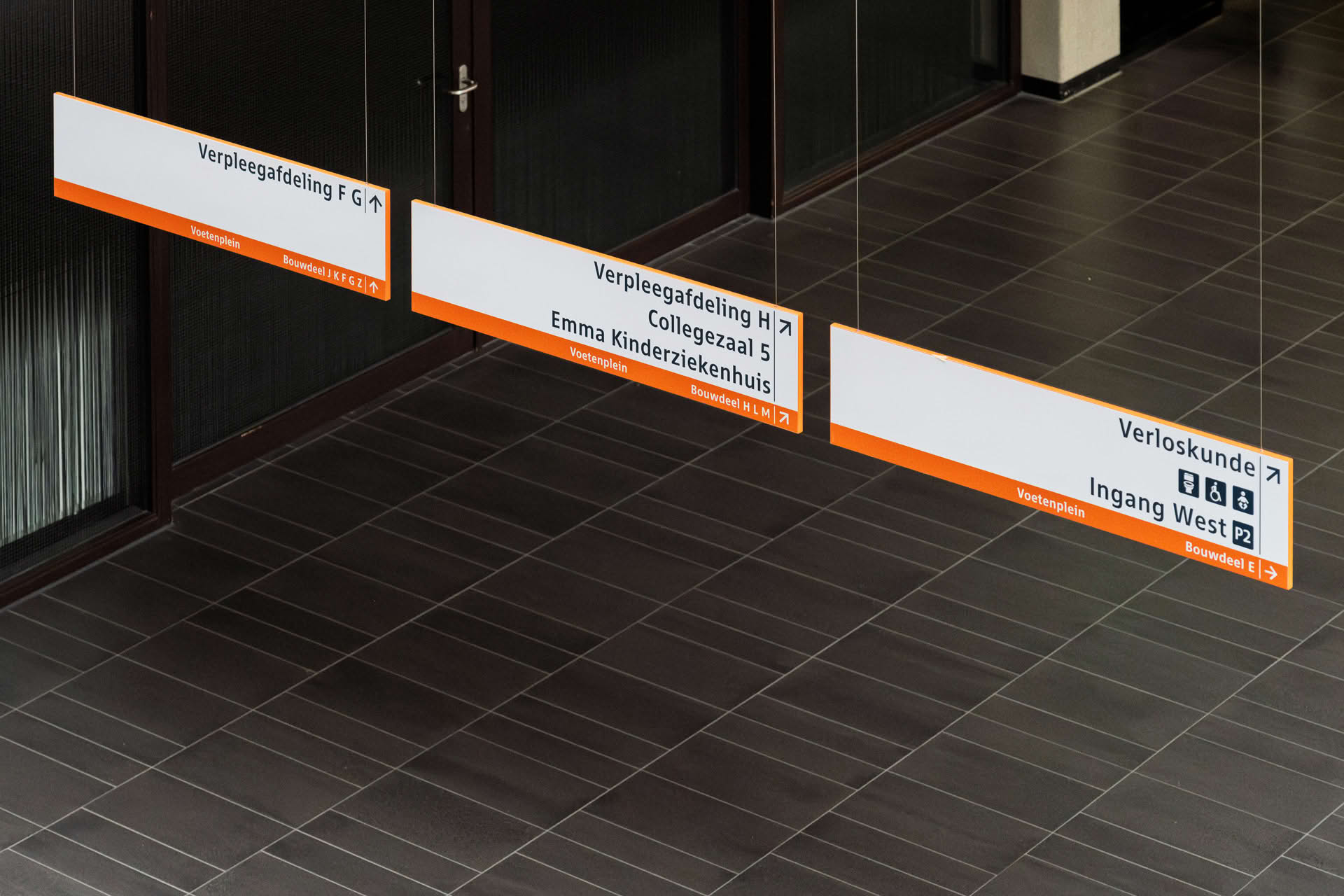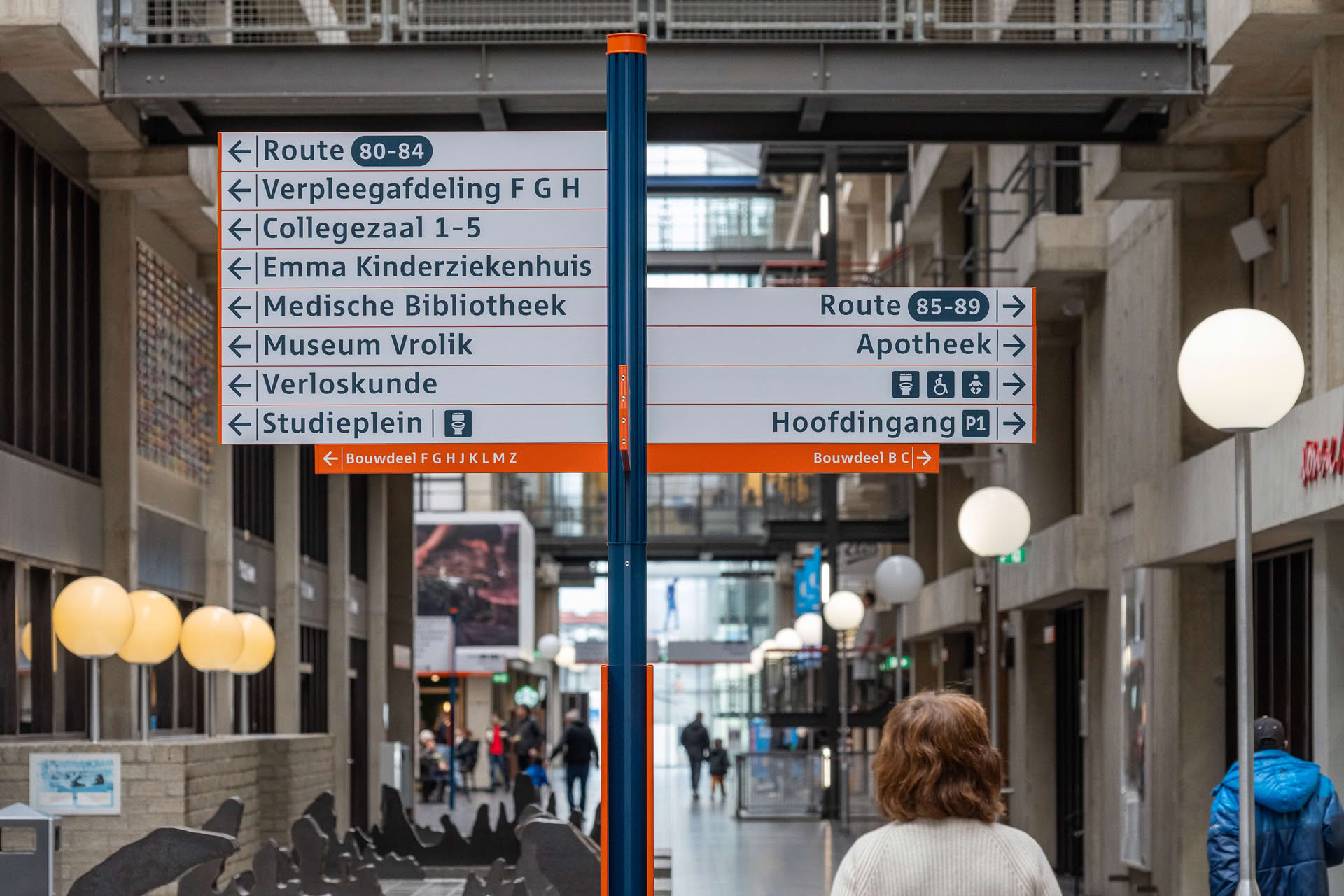Amsterdam UMC is a leading academic medical center and hospital with approximately 1.3 million patient contacts annually. It employs around 16,000 staff, including over 2,500 researchers and 1,400 medical specialists. It is a prominent hub for medical research, education, and patient care, combining cutting-edge medical technology with innovative healthcare approaches. The center is renowned for its comprehensive medical services, groundbreaking research initiatives, and its role in training the next generation of medical professionals.
Navigating Complexity in Healthcare
The Amsterdam UMC wayfinding project represents more than a signage solution—it’s a holistic approach to spatial navigation. By integrating orientation, intelligent information design, and human-centered experience, the strategy offers a replicable model for managing complex institutional environments, focusing on human comfort and reducing spatial anxiety.
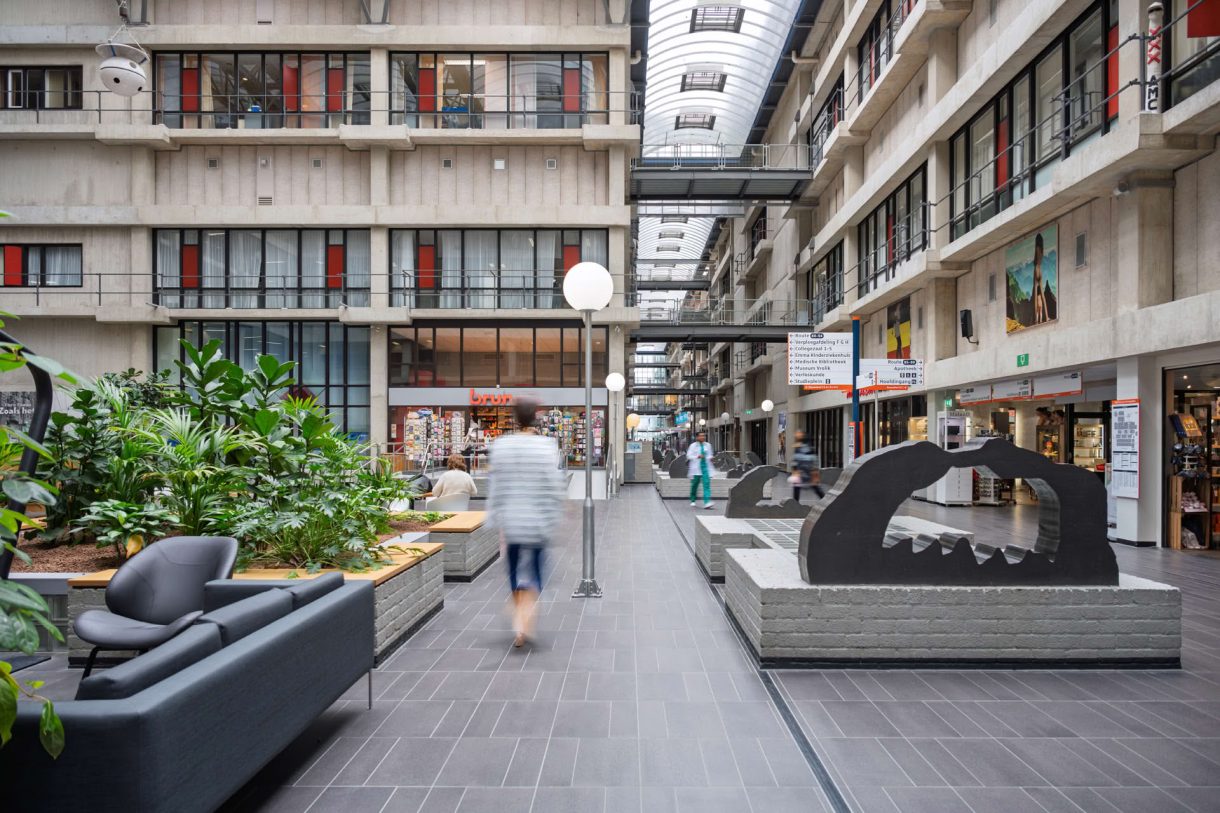
Orientation
‘Decoding Spatial Complexity’
Amsterdam UMC’s architectural landscape presents an extraordinary wayfinding challenge, with 19 building sections, up to 10 floors, and intricate walkways. The Mijksenaar strategy transformed this complexity by using public squares as critical orientation landmarks, creating intuitive spatial cues that naturally guide movement.
With its city-like structure and contrasts, the brutalist design became a navigational asset rather than a barrier. Instead of overwhelming users with architectural details, the approach focused on helping people orient themselves effortlessly.
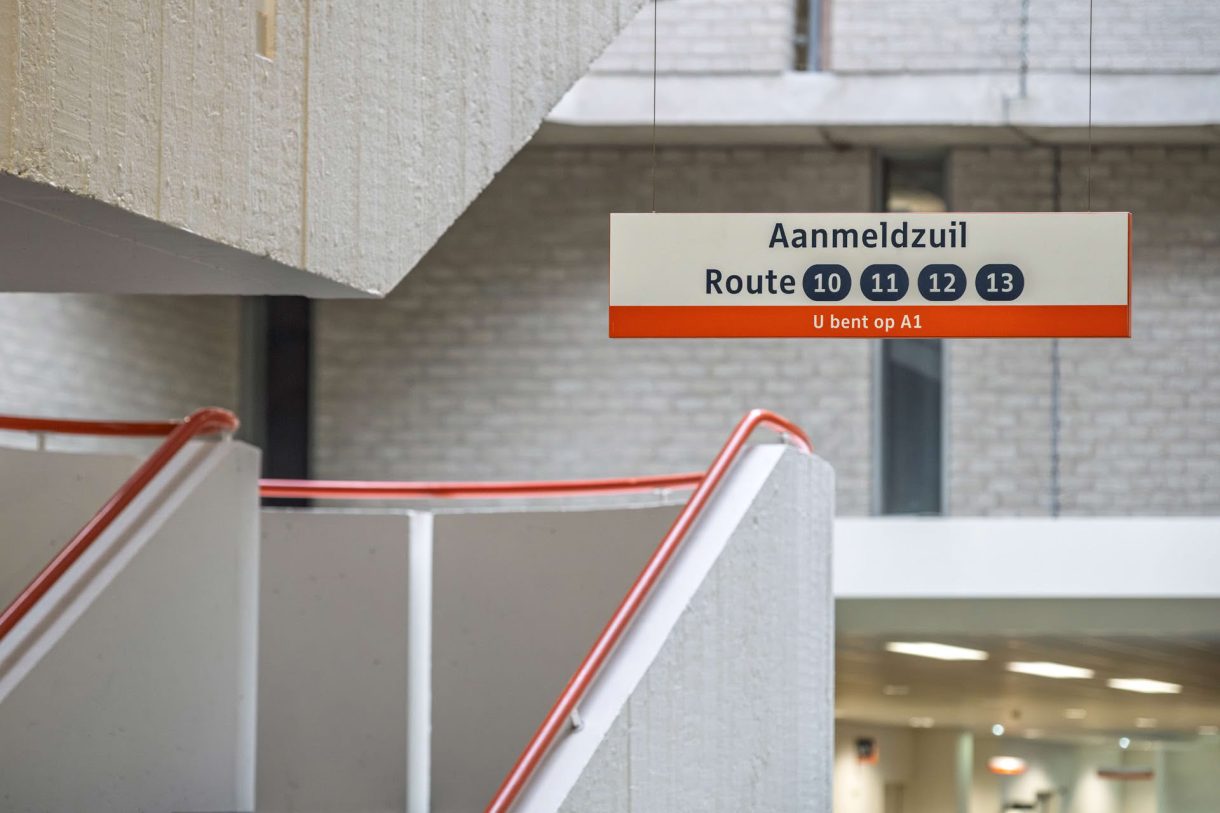
Navigation
‘An Intelligent Information System’
The core strategy developed a trustworthy navigation system prioritizing user experience. With over 3,000 signs implemented, the approach created a logical, consistent system that reduces user stress. Key principles included comprehensive renumbering and developing a universal wayfinding language applicable across all Amsterdam UMC locations.

Experience
‘Human-Centered Design’
What distinguished this project was its commitment to human interaction. Over four years and 65 site visits, the team engaged extensively with diverse stakeholder groups: patients, visitors, students, and employees. Patient involvement was particularly innovative, with user testing integrated directly into the design process.
The strategy recognizes that each user group experiences the space differently—a nervous patient, a hurried researcher, or a worried family member. The Mijksenaar approach transformed a potentially disorienting environment into a more navigable, less stressful space by creating a flexible, empathetic system.
